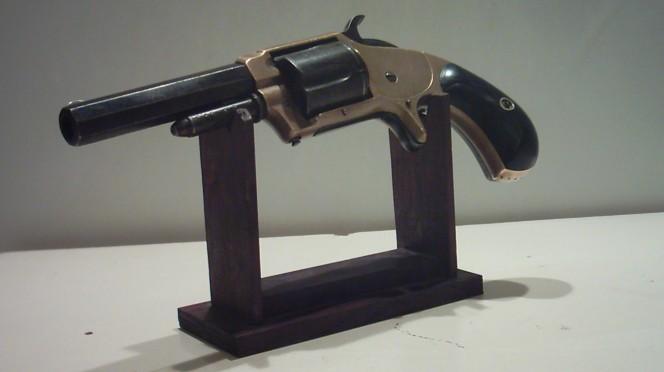
6. REVOLVER Withneyville Armoury
SMALL REPAIR ON A WHITNEYVILLE ARMOURY REVOLVER
A few weeks ago I won an auction on an American website, for a nice pocket Whitneyville Armoury revolver made in the 1870's.
The gun was delivered in good order and is in nice condition, but, as he seller had told me, "There is a little problem with one of the springs". The gun actually works, but the cylinder does not turn at each cocking and the hammer spring is very weak.
So, let's have a closer look...
THE WHITNEYVILLE ARMOURY REVOLVER
I don't know the Whitneyville Armoury very well, and I am presently looking for more documentation on it; however, taking the risk of telling lies, I assume this company was the successor of the famous American gunmaker Whitney.
Eli Whitney invented the cotton gin in 1793. At first, the machine was intended to reduce the number of slaves in the cotton plantations, by a more efficient takeover of the labour of numerous men and women. However, the machine proved to be "generator of employments" in the first place, and changed the nature of the slave's work instead of reducing it.
Around his shop, Whitney had installed a smith and various other shops, which attracted people and lead to the formation of a village, complete with saloons, churches and warehouses, that was very logically called Whitneyville.
When samuel Colt came back to the gunmaking business in 1846 after the bankruptcy of his Paterson factory, he had no tools nor material; so he went to Whitney for the production of his legendary Whitneyville-Walker Dragoon revolver, issued in 1847.
Later on, Whitney produced excellent .44 and .36 percussion revolvers that were used by the Union Army during the Civil War, and even copied by the Confederate gunsmith Spiller&Burr.
But let's go back to our problem...
IDENTIFICATION
- Pocket single-action revolver, 5-shot in .32 rimfire caliber
- General pattern of the Smith&Wesson model 1 1/2
- Brass frame, originally nickel or silver plated
- S&W style cover plate on the left side
- Birdshead grip
- Spur trigger allowing single action only
- Octagonal barrel
- Barrel, cylinder, hammer, trigger and screws blued
- Grip plates of oil-polished walnut
- Rifling 7 grooves clockwise
- Serial# 1540 stamped underside barrel and butt, 540 stamped on rear face of cylinder
- Barrel markings in 2 lines: WHITNEYVILLE ARMOURY CT. USA - PATD MAY 23, 1871
According to the seller, who is more specialized in fine art than in antique firearms, the gun came from the Gutson legacy. H. Gutson was the American sculptor who sculpted the 4 President's heads at Mount Rushmore. Lacking any documentary evidence on that point, however, I'll simply quote it as a possibility.

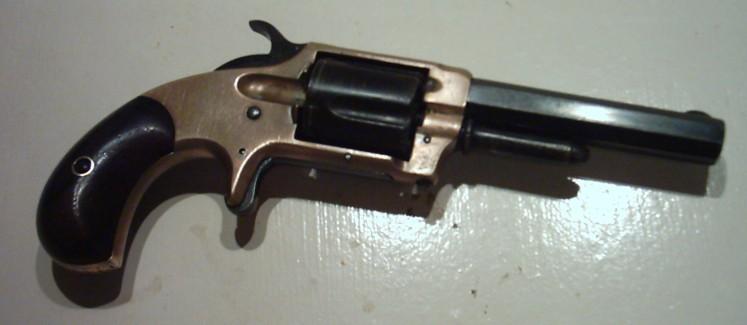
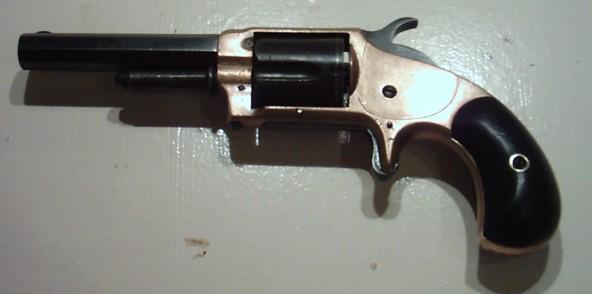
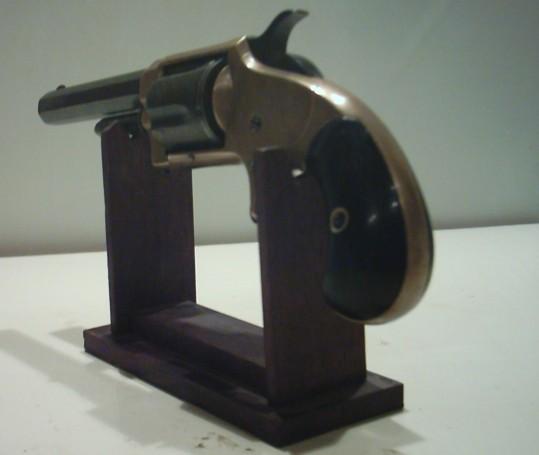
CLOSE EXAMINATION AND DIAGNOSTICS
Apart from the nickel or silver plating that has gone, the gun is in excellent general condition with no rust nor pitting. There is a cylinder ring, a small stripe of whitened metal in the locking notches area. This is typical for American revolvers and is due to the friction of the locking cam against the cylinder. This cam goes down just a fraction of a second to unlock the cylinder when the hammer is cocked, and comes back in place again immediately, causing the friction and thus the cylinder ring.
- The cylinder does not align properly and would not turn by each cock action
- The main spring is very weak, probably too weak to ignite a cartridge.
Disassembling the grip plates and the cover plate allows me immediately to find the causes of those minor problems.
- The main spring is not the original one. It is coming from a Iver Johnson “Defender”, one of the low quality cheap revolvers that flooded the market in these days, and that were called "Suicide Special" or "Saturday Night Special" by early American collectors, because they are more dangerous for the shooter than for his target, and live just long enough to shoot a magazine or two. (I would temperate this a little, but that is another debate. Pictures 5 and 6 show a comparison between the Whitneyville Armoury, a Whitney Defender (center) and a Colt New Line 1873 (foreplan), all three featuring 5-shots in the .32 rimfire caliber and issued in the same era. Of all three, the Colt is far the best one on the field of the quality and reliability).
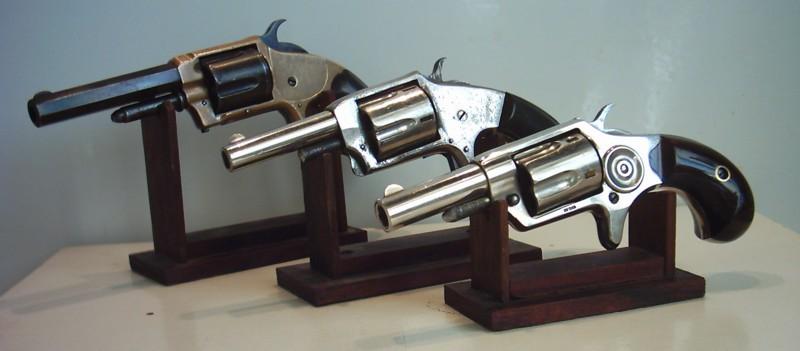
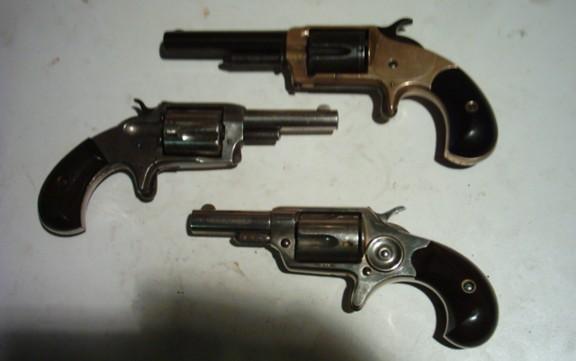
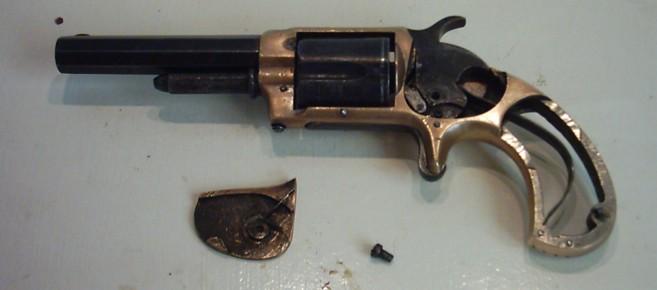
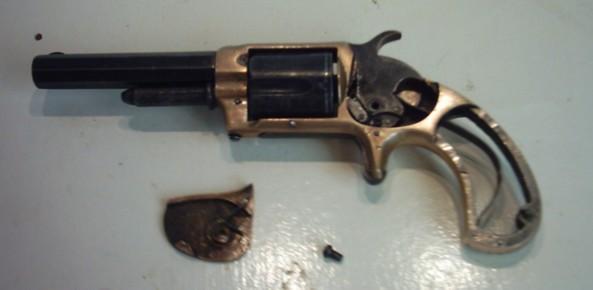
- The pawl or hand spring, attached to the internal side of the cover plate, is here a simple little metallic comma that could not possibly do a good job. It has probably been broken.
The quality of this gun situates somewhere between that of the S&W model 1 1/2 and that of the Suicide Specials. Like on the latter, the pawl spring is of a conception that is predisposed to malfunctions, breakage and jamming. It is a thin metallic band of about a half mm in thickness, one mm wide and about 4 centimetre long; one end is hold in a slot cut in the cover plate, and the band is folded all the way around the screw hole and comes to rest on the pawl in a very tiny angle. Any wider angle would cause malfunctions.
The good part is that the spring is very easy to replace.
REPLACEMENT OF THE PAWL SPRING
I've got on hand an excellent spiral coil spring, coming from some large clock and that is exactly what I need.
Since the hard tempered metal does not allow sawing, I first break a fragment of about 4 cm long, simply by pincing the spring in a vice and hitting it with a hammer.

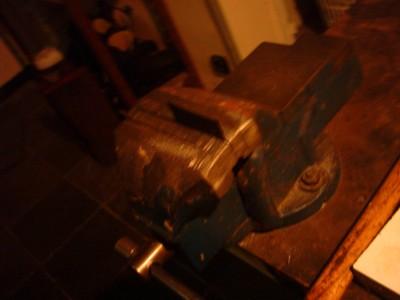
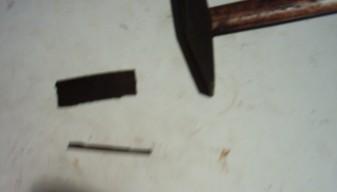
Then I put the fragment in the length into the vice, making sure that a band of about 3 mm in width is held in the vice. One or two hits with the hammer break the metal right in line with the vice. So I obtain a small stripe of about 4 cm long and 3 mm wide, of course with irregular edges.
I just have to hold it in the vice again and to ile it at the proper width using a strong file.
Now I squeeze one end of my stripe into the notch on the cover plate; then I give it the proper profile - around the screw hole - using fine pincers.
That's it, folks - my spring is finished.
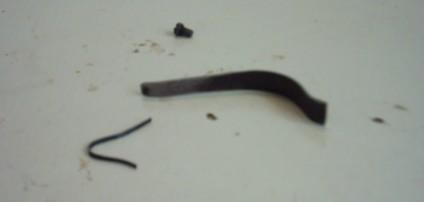
The good part in a job like this one, is that I don't need to temper. Clock coil springs are thin and elatic enough to allow this operation without extra work.
REPLACEMENT OF THE MAIN SPRING
Same here - I have on hand another clock spring, of about 1.5 mm thickness, so that it is very easy to break a portion and file it to the proper width. I can easily bend it with my pincers and give it the proper profile. It is just thicker and maybe one mm longer than the formal one, but it is quite identical in shape.

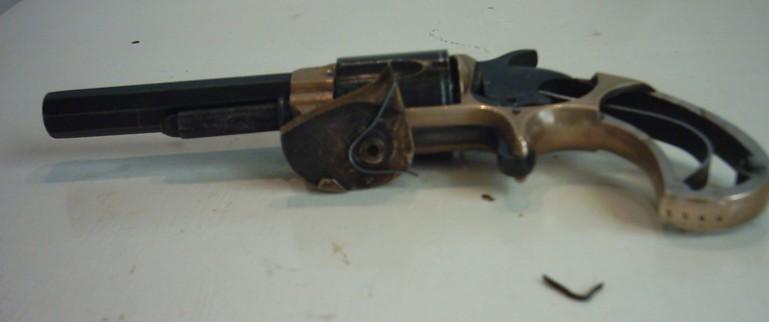
Once my springs put in place, I reassemble the gun and check the action. Bull's eye right from the start: the cylinder turns immediately by any cocking of the hammer, it aligns exactly the barrel and the hammer spring is strong.
There we are. The entire job took less than one hour.
Marcel